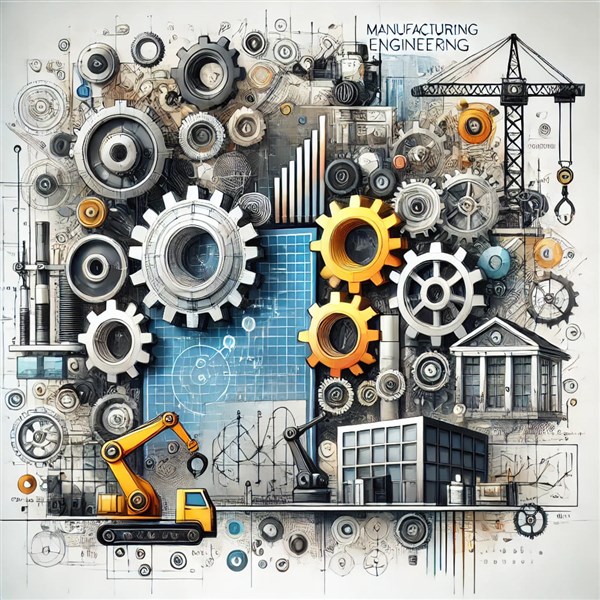We're open through the holidays to support your upskilling goals — book your session today!
We're open through the holidays to support your upskilling goals — book your session today!
Unable to find what you're searching for?
We're here to help you find it
Modern manufacturing is no longer confined to greasy machine shops or manual drafting tables. In the age of smart factories and Industry 4.0, digital technologies have become the backbone of precision, efficiency, and innovation. Among the most transformative tools in this landscape are CAD (Computer-Aided Design), CAM (Computer-Aided Manufacturing), and engineering simulation software.
For aspiring and working professionals alike, mastering these technologies during manufacturing engineer training is not just a bonus — it’s a necessity. In this blog, we’ll explore the critical role that CAD, CAM, and simulation play in training programs and how they prepare engineers to drive innovation and productivity in the real world.
🔷 CAD – Computer-Aided Design
CAD software enables engineers to create detailed 2D drawings and 3D models of components, assemblies, or entire systems. Tools like AutoCAD, SolidWorks, CATIA, and Creo are standard in the industry.
🔷 CAM – Computer-Aided Manufacturing
CAM software converts CAD models into machine-readable instructions, typically for CNC (Computer Numerical Control) machines. Popular platforms include Mastercam, Fusion 360, and Siemens NX.
🔷 Simulation (CAE – Computer-Aided Engineering)
Simulation software is used to test and analyze designs under real-world conditions, such as thermal loads, fluid dynamics, and mechanical stress. Tools include ANSYS, COMSOL Multiphysics, and Simulia.
As the manufacturing industry becomes more digital and data-driven, engineers must be fluent in using these platforms to reduce costs, improve quality, and accelerate time-to-market.
Let’s explore how each contributes to a robust and modern training program.
📚 What Students Learn:
🚀 Why It Matters:
CAD teaches future engineers the language of manufacturing design. It helps them visualize ideas, identify flaws early, and collaborate across departments. Mastery of CAD also aids in reducing material waste, improving ergonomics, and ensuring design for manufacturability (DFM).
🛠 Real-World Skills:
📚 What Students Learn:
🚀 Why It Matters:
While CAD focuses on design, CAM brings it to life by creating detailed machining instructions. Without CAM, there's a disconnect between the design intent and real-world production, which can result in costly rework or defects.
CAM training ensures engineers can:
🛠 Real-World Skills:
📚 What Students Learn:
🚀 Why It Matters:
Simulation empowers engineers to fail early and virtually. Instead of building physical prototypes for every iteration, students can test models under varying loads, speeds, temperatures, and constraints. This reduces R&D time and enhances design performance.
Simulation training also supports:
🛠 Real-World Skills:
In advanced training programs, students learn not just individual tools, but also how they integrate. This forms a digital thread — a connected workflow from design to production and validation.
Integrated Learning Outcomes:
This digital integration mirrors how modern companies operate, giving students a realistic and holistic learning experience.
Imagine this scenario:
This is not futuristic. It's the daily workflow in many manufacturing companies — and training programs must reflect this interdisciplinary approach.
🎓 How Training Programs Teach These Skills
Methods Include:
Tools Students Might Use:
📊 Industry Demand for These Skills
According to job portals and workforce reports:
Bonus Advantage:
Certifications in tools like SolidWorks (CSWA/CSWP) or ANSYS Certified Engineer also enhance employability post-training.
🧠 Conclusion
CAD, CAM, and simulation aren’t just software skills — they’re critical pillars of modern manufacturing. For engineering students and professionals alike, mastering these tools through a well-rounded training program means being prepared to innovate, optimize, and lead in the digital factory of the future.
From product ideation to mass production, these tools form a continuous digital workflow that reduces cost, increases quality, and enhances speed — all while developing engineering intuition in learners.
🚀 Final Thought:
If you're planning to enroll in a manufacturing engineering program, make sure it offers hands-on exposure to CAD, CAM, and simulation tools — because the future of manufacturing is not just mechanical; it’s digital, integrated, and smart.
The role of CAD, CAM, and Simulation in manufacturing engineer training cannot be overstated. These tools offer a practical approach to training, bridging the gap between theory and application. With the right training, manufacturing engineers can leverage these tools to drive efficiency and innovation in the manufacturing industry.
Join us at Koenig Solutions to enhance your skills and stay competitive in the fast-paced manufacturing industry.

Aarav Goel has top education industry knowledge with 4 years of experience. Being a passionate blogger also does blogging on the technology niche.










